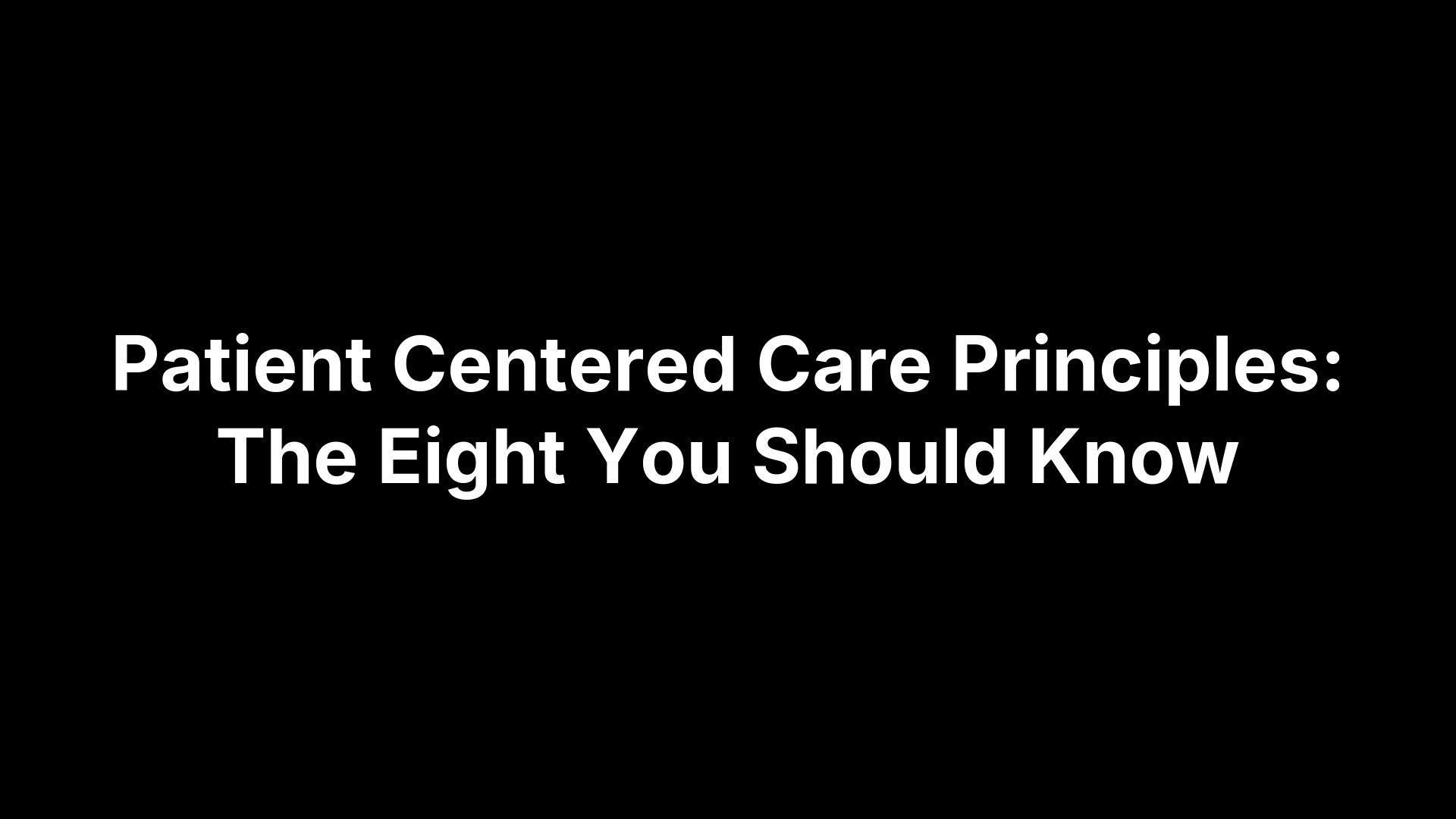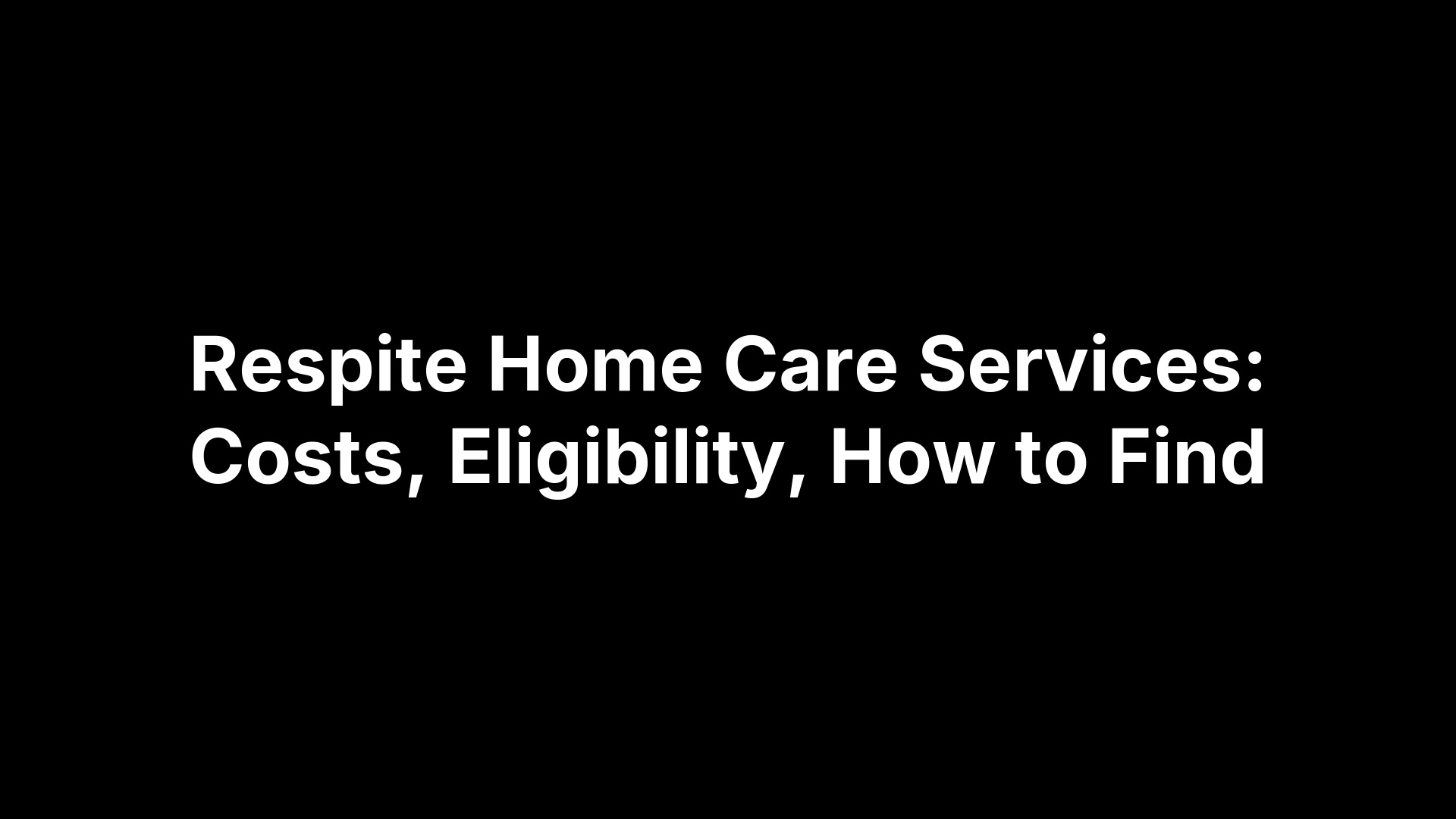Patient Centered Care Principles: The Eight You Should Know


Patient Centered Care Principles: The Eight You Should Know
Healthcare teams everywhere say they want to put patients first. But when you ask what that actually means, the answers get fuzzy. You hear vague promises about better communication or showing more empathy, but no clear steps to make it happen. The gap between good intentions and real execution leaves patients feeling like just another case number moving through the system, rather than individuals with unique needs and concerns.
This guide breaks down the eight principles of patient centered care developed by the Picker Institute. You'll learn what each principle means, why it matters, and how to translate these concepts into workflows your team can actually use. We'll show you practical ways to implement each principle, how to measure whether your changes are improving patient experiences, and how to tackle the common roadblocks that derail improvement efforts before they gain any real momentum.
1. Patient centered logistics with VectorCare
Patient centered care principles fall apart the moment your logistics can't keep up. You can train your staff on empathy and communication all day long, but if patients wait hours for transport or never get clear updates about their ride home, the principles remain empty words on a poster. VectorCare bridges this gap by turning logistics operations into a tool that actively supports each principle, giving your team the infrastructure to deliver the patient experience you promise.
Overview of VectorCare and who it serves
VectorCare provides a unified platform for patient logistics that serves hospitals, home health agencies, NEMT providers, and related healthcare organizations. Your operations managers, care coordinators, and dispatch teams use the system to book and manage patient services ranging from non-emergency transport to home care appointments and DME deliveries. The platform cuts scheduling time by 90% while connecting every stakeholder in the care chain through a single interface, removing the broker middlemen and phone tag that slow everything down.
How better logistics enable patient centered care
When you reduce the time to schedule a ride from 30 minutes to 3 minutes, you free up staff to focus on the patient sitting in front of them instead of wrestling with spreadsheets and phone calls. Real-time communication features let your care team send updates directly to patients and family members, addressing anxiety before it builds. Automated workflows handle routine coordination tasks in the background, so your team can spend their energy on the human elements that actually require judgment, empathy, and adaptation to individual circumstances.
Logistics that work invisibly let care teams focus on what matters: the person receiving care.
Ways to align VectorCare with the eight principles
VectorCare's Hub module lets you design custom workflows that embed each patient centered care principle into your daily operations. You can build protocols that capture patient preferences during intake, trigger family notifications at key transition points, and route questions to appropriate team members based on the type of support needed. The Trust module ensures your vendor network meets quality standards, so every transport provider or home care agency your patients encounter delivers consistent, respectful service.
Examples of workflows to describe
Your team can create a discharge workflow that automatically schedules transportation based on the patient's stated preference for timing, sends appointment reminders via their chosen channel, and alerts family members when the patient leaves the facility. For home care coordination, you build workflows that match patients with caregivers who share relevant cultural backgrounds or language capabilities, then maintain continuity by prioritizing the same caregiver for future visits when possible.
2. Picker patient centered care principles
The Picker Institute identified eight core principles that define what patient centered care actually looks like in practice. These principles emerged from extensive research with patients, families, and healthcare staff, capturing what matters most when people need medical care. Each principle addresses a specific dimension of the patient experience, from the moment someone seeks care through their recovery and beyond. Understanding these principles gives your team a concrete framework for evaluating whether your current operations truly serve patients or just process them efficiently.
Respect for patient values preferences and expressed needs
You treat patients as individuals with unique values and preferences, not as standardized cases that all receive identical treatment protocols. This principle requires your team to actively involve patients in decision-making about their care options, timing, and approaches. Your staff must recognize that cultural backgrounds, personal beliefs, and life circumstances shape what patients consider acceptable or desirable care, and you adjust your recommendations accordingly rather than expecting patients to conform to a one-size-fits-all model.
Coordination and integration of care
Patients feel vulnerable when multiple providers and departments handle different aspects of their care without talking to each other. This principle demands that you coordinate clinical care, support services, and administrative processes so patients experience seamless transitions instead of fragmented hand-offs. Your team needs systems that share information across specialties, schedule appointments that account for the patient's entire care plan, and eliminate situations where patients must repeat their medical history to every new person they encounter.
Information communication and education
Your patients need clear, accessible information about their condition, prognosis, and treatment options delivered in language they actually understand. This principle requires your team to provide three types of communication: updates on clinical status and progress, explanations of care processes and what to expect next, and guidance that helps patients manage their own health and make informed decisions. You avoid medical jargon and verify that patients truly comprehend critical information rather than just nodding along politely.
Physical comfort and supportive environments
Pain management, assistance with daily activities, and the physical environment directly impact how patients experience your care. This principle demands that your team actively address physical needs rather than waiting for patients to request help. You create spaces that afford privacy and dignity, reduce noise and disruption, and make patients feel safe rather than exposed or uncomfortable during vulnerable moments.
Emotional support empathy and anxiety reduction
Fear and anxiety about illness, treatment, and outcomes can be as debilitating as physical symptoms. This principle requires your staff to acknowledge and address emotional needs through compassionate interactions that recognize patients as whole people facing difficult circumstances. Your team provides reassurance, listens to concerns about prognosis and family impact, and helps patients navigate financial worries that accompany medical care.
Emotional support isn't a soft skill. It's a clinical intervention that affects outcomes.
Involvement of family friends and caregivers
Family members and close friends play crucial roles in patient wellbeing and recovery. This principle means you accommodate family presence, involve them in care decisions when appropriate, support them as caregivers, and recognize their own needs during stressful medical situations. Your policies and spaces should facilitate family involvement rather than treating visitors as inconvenient obstacles to efficient operations.
Continuity of care and smooth transitions
Patients worry about managing their care after discharge, when professional support disappears but recovery continues. This principle requires you to provide detailed, understandable instructions for medications, activities, and follow-up appointments. Your team coordinates ongoing services, ensures patients know how to access support when problems arise, and maintains communication across transitions from hospital to home or between care settings.
Access to care across settings and channels
Getting appointments when needed, reaching the right provider, and navigating complex healthcare systems creates significant patient stress. This principle demands that you make scheduling convenient, provide clear guidance on accessing specialists, offer multiple communication channels that match patient preferences, and remove unnecessary barriers that prevent people from getting timely care when they need it most.
3. Turning principles into workflows
Abstract patient centered care principles become operational reality when you translate them into specific workflows your team executes every day. The transformation from concept to practice requires you to map current processes, identify gaps where principles aren't being met, and redesign workflows that embed respect, coordination, and communication into each step. Your goal is creating repeatable processes that deliver consistent patient experiences while maintaining the flexibility to adapt to individual circumstances and preferences.
Start with a patient journey map
You document every touchpoint from initial contact through post-discharge follow-up, capturing where patients interact with staff, systems, and facilities. This map reveals moments that matter most to patients and exposes friction points where current processes fall short of patient centered care principles. Your team uses this visual representation to spot opportunities where better coordination, clearer communication, or family involvement would improve the experience without adding complexity.
Translate each principle into concrete steps
Each principle needs specific actions and decision points built into your workflows rather than vague instructions to "be respectful" or "communicate well. You define what respect looks like when scheduling an appointment, how coordination happens during care transitions, and which staff members provide emotional support at key moments. Your workflows specify who does what, when they do it, and what information they need to execute each patient centered action consistently.
Standardize workflows without losing personalization
Your standard processes should capture patient preferences early and use that information to customize subsequent interactions automatically. You build choice points into workflows where staff can adapt based on individual needs while maintaining the overall structure that ensures nothing gets missed. Templates and protocols handle the predictable elements, freeing your team to focus their attention on the unique aspects of each patient's situation.
Standardization creates the foundation that makes personalization possible at scale.
Use automation to handle routine logistics
Automated systems manage scheduling, notifications, and information routing so your staff can concentrate on interactions that require human judgment and empathy. You configure rules that trigger appropriate actions based on patient attributes, service type, or timing, ensuring coordination happens seamlessly in the background. Automation eliminates the manual effort that previously prevented your team from fully implementing patient centered care principles.
4. Measuring what patients experience
You need quantifiable evidence that your patient centered care principles are working, not just anecdotal success stories from satisfied staff. Measurement systems connect your improvement efforts to actual patient outcomes and experiences, revealing where your workflows deliver on promises and where gaps remain. Your metrics should track both clinical results and the qualitative dimensions patients care about, from wait times to feeling heard during difficult conversations.
Choose experience and outcome metrics that matter
Your measurement approach should capture both process and perception metrics across the patient journey. You track operational indicators like appointment availability, transport arrival accuracy, and discharge timing alongside experience measures such as patient-reported pain levels, understanding of care instructions, and family involvement satisfaction. These combined metrics reveal whether efficiency gains come at the expense of patient experience or genuinely improve both dimensions simultaneously.
Collect and act on patient and family feedback
You gather structured feedback through surveys at key touchpoints and create channels for open-ended input that captures nuances standard questions miss. Response rates improve when you ask brief, specific questions immediately after experiences rather than sending lengthy surveys weeks later. Your team closes the loop by sharing what you learned with patients and explaining changes made based on their feedback.
Connect operational data with patient experience
VectorCare's Insights module links logistics performance to experience scores, showing how transport delays or communication gaps correlate with patient satisfaction ratings. You identify patterns where operational breakdowns create predictable experience problems, then prioritize fixes that deliver the largest impact on what patients actually notice and care about.
Data without action is just expensive documentation of ongoing problems.
Build dashboards and reporting for teams
Your dashboards surface real-time metrics for frontline staff alongside trend analysis for leadership, giving each role the information needed to improve daily work or strategic planning. You configure alerts that flag declining performance in specific patient centered care principles before problems become widespread, enabling quick course corrections.
5. Common challenges and fixes
Even with clear patient centered care principles and well-designed workflows, your implementation efforts hit predictable obstacles that slow progress or derail initiatives entirely. Recognizing these challenges early lets you plan mitigation strategies rather than reacting when problems surface unexpectedly.
Cultural change and staff engagement
Your staff resists new workflows when they see them as extra work rather than tools that make their jobs easier. You address this by demonstrating quick wins that reduce their daily frustration.
Data silos and fragmented systems
Information trapped in separate systems prevents the coordination that patient centered care demands. Integration tools connect your platforms so data flows automatically where teams need it.
Resource limits and competing initiatives
Budget constraints and multiple simultaneous projects compete for attention and staff time. You prioritize changes that deliver measurable results quickly to build momentum for larger efforts.
Progress compounds when you focus resources on changes that prove their value fast.
Keeping improvements going over time
Initial enthusiasm fades as daily pressures reassert themselves and old habits creep back. Regular measurement and feedback loops keep your team focused on maintaining the patient experience standards you worked to achieve.
Final thoughts
Patient centered care principles transform from abstract concepts into operational reality when you build them directly into your logistics workflows. The eight Picker principles provide a concrete framework for evaluating whether your current processes truly serve patients or simply move them through your system efficiently. Implementation requires measurement, not just good intentions, so you can identify where your workflows deliver on promises and where gaps persist between stated values and actual patient experiences.
VectorCare provides the infrastructure your team needs to execute these principles consistently across every patient interaction. Your operations become the mechanism that delivers respect, coordination, and communication rather than the barrier preventing it.
The Future of Patient Logistics
Exploring the future of all things related to patient logistics, technology and how AI is going to re-shape the way we deliver care.



